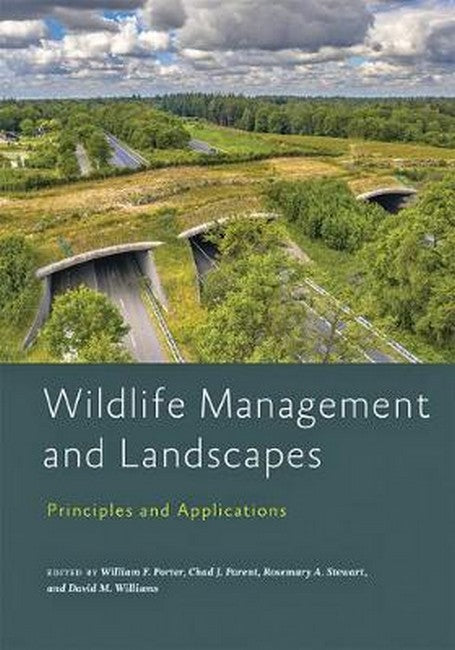William F. Porter is an emeritus professor of wildlife conservation at Michigan State University. Chad J. Parent is a research ecologist at the North Dakota Game and Fish Department. Rosemary A. Stewart is the associate director of Boone and Crockett Programs at Michigan State University. David M. Williams is an assistant professor and the interim director of the Boone and Crockett Quantitative Wildlife Center at Michigan State University.
Request Academic Copy
Please copy the ISBN for submitting review copy form
Description
List of Contributors Foreword Preface Acknowledgments Part I. Understanding Habitat on Landscapes Chapter 1. The Landscape Perspective in Wildlife and Habitat Management Chad J. Parent and Fidel Hernandez Chapter 2. Wildlife Management and the Roots of Landscape Ecology James A. Martin and John M. Yeiser Chapter 3. Wildlife-Landscape Relationships: A Foundation for Managing Habitats on Landscapes Michael L. Morrison and William M. Block Part II. Establishing a Landscape Foundation for Wildlife Managers Chapter 4. Essential Concepts in Landscape Ecology for Wildlife and Natural Resource Managers Humberto L. Perotto-Baldivieso Chapter 5. Using Landscape Ecology to Inform Effective Management Joseph A. Veech Chapter 6. Translating Landcover Data Sets into Habitat Features David D. Diamond and Lee F. Elliott Chapter 7. Influence of Habitat Loss and Fragmentation on Wildlife Populations Amanda E. Martin, Joseph R. Bennett, and Lenore Fahrig Chapter 8. Data Collection and Quantitative Considerations for Studying Pattern-Process Relationships on Landscapes Jacqueline L. Frair and Guillaume Bastille-Rousseau Chapter 9. Part II Synthesis: Establishing a Landscape Foundation for Wildlife Managers David M. Williams Part III. Establishing a Wildlife Management Foundation for Landscape Ecologists Chapter 10. Managing Wildlife at Landscape Scales John W. Connelly and Courtney J. Conway Chapter 11. Improving Communication between Landscape Ecologists and Managers: Challenges and Opportunities Kerri T. Vierling, Joseph D. Holbrook, Jocelyn L. Aycrigg, Teresa C. Cohn, and Leona K. Svancara Chapter 12. Developing Useful Spatially Explicit Habitat Models and Decision-Support Tools for Wildlife Management Neal D. Niemuth, Michael E. Estey, and Ronald D. Pritchert Chapter 13. Managing Landscapes and the Importance of Conservation Incentive Programs Mark J. Witecha and Todd R. Bogenschutz Chapter 14. Part III Synthesis: Establishing a Wildlife Management Foundation for Landscape Ecologists David M. Williams Part IV. Translating Landscape Ecology to Management Chapter 15. Age, Size, Configuration, and Context: Keys to Habitat Management at All Scales Jeffrey K. Keller Chapter 16. A Joint Venture Approach Gregory J. Soulliere and Mohammed A. Al-Saffar Chapter 17. Translating Landscape Ecology to Management: A Landscape Conservation Cooperatives Approach Cynthia A. Jacobson, Amanda L. Sesser, Elsa M. Haubold, Kevin M. Johnson, Kimberly A. Lisgo, Betsy E. Neely, Fiona K. A. Schmiegelow, Stephen C. Torbit, and Greg Wathen Chapter 18. Mapping Priority Areas for Species Conservation Casey A. Lott, Jeffery L. Larkin, Darin J. McNeil, Cameron J. Fiss, and Bridgett E. Costanzo Chapter 19. Nongovernmental Organizations: Their Role in and Approach to Landscape Conservation Jodi A. Hilty, Karl A. Didier, and Jon P. Beckmann Chapter 20. Part IV Synthesis: Translating Landscape Ecology to Management David M. Williams Index

